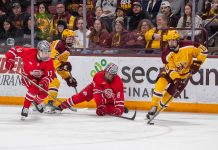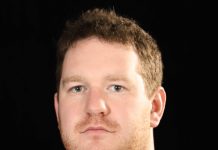The NCAA moved a step closer to revamping its amateurism rules during a recent meeting of the Division I Management Council. The amateurism deregulation package, which has been worked on for over a year and was first discussed on USCHO last fall, could see final approval by April, 2001.
The deregulation proposal changes the definition of amateurism from one based on whether someone was compensated for their play, to one based upon the amount of competition someone has participated in. In other words, instead of being ruled ineligible for accepting any monetary rewards, eligibility would be based solely upon how many years a player has already participated in the sport.
The deregulation package would affect students who have yet to enroll in college. The so-called pre-enrollment package would allow prospective student athletes to:
The package was passed through by the Management Council without actually voting on any specifics. This was done in order to solicit feedback from the members schools before final action is considered next April.
“I’m hoping we can have much more meaningful discussion now that for the first time we have specific proposals for all the constituencies — including basketball coaches — to look at,” said Ted Leland, chair of the Council and director of athletics at Stanford University.
“Talking about different potential proposals regarding pre-enrollment amateurism status has caused a lot of rumor and misunderstanding to surface. Now that the proposals are in writing and out for comment, we hope that will at least clear up some of the debate.”
How hockey will be affected is still very much up in the air.
The initial proposal called for the four-year eligibility clock to start ticking on a prospective student athlete from the time they were 18, or the year they graduated high school. It was an across-the-board proposal, and did not give special consideration to any sport.
Each year a student-athlete participated in their sport beyond 18 years old, would have cost the player one year of eligibility and forced them to sit a year in residence at the school before playing.
This would have greatly affected hockey, because many incoming freshman spend up to two years in juniors or prep school before entering college.
Hockey then pushed for, and received, a waiver on U.S. junior and Prep School players.
Nonetheless, the proposal would still have far-reaching impacts on hockey, because this would mean that major junior player — as of now considered professionals by NCAA standards — would be able to leave at will to come to college, without any penalty (assuming it was before 18 years old).
However, hockey people could not reach a consensus on whether this was good or bad for college hockey. Thus, another amendment was passed this summer, saying that a major junior player who wants to enter college, has to sit out a year and lose a year of eligibility for each season of major juniors he played.
Conferences and other groups have until the end of November to submit alternative proposals in advance of January’s non-legislative meeting of the Management Council. The next legislative meeting is set for April, 2001, which is the target for final action from the Council and Board of Directors.
According to an NCAA News article: “Another set of proposals concerning amateurism rules for student-athletes currently enrolled also was moved on for comment, but this time with the Council’s support. Those proposals would allow a student-athlete to engage in fee-for-lesson employment arrangements; accept Operation Gold money for place finish in such events as the Olympics; arrange for loans based on future potential earnings and provide for NCAA payment of student-athlete disability insurance premiums.”


